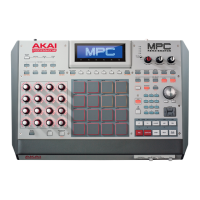276
LFO LFO is an acronym for low-frequency oscillator. The LFO generates a periodic
oscillation at a low frequency and features variable waveshapes. Similar to an
envelope, an LFO can be used to modulate a sound-shaping component.
MIDI MIDI stands for musical instrument digital interface. Developed in the early 1980s,
MIDI enables interaction between various types of electronic music instruments from
different manufacturers. At the time a communications standard for heterogeneous
devices did not exist, so MIDI was a significant advance. It made it possible to link
various devices with one another through simple, standardized connectors.
Essentially, this is how MIDI works: One sender is connected to one or several
receivers. For instance, if you want to use a computer to play a MIDI synthesizer, the
computer is the sender and the synthesizer acts as the receiver. With a few
exceptions, the majority of MIDI devices are equipped with two or three ports for this
purpose: MIDI In, MIDI Out and in some cases MIDI Thru. The sender transfers data
to the receiver via the MIDI Out jack. Data are sent via a cable to the receiver's MIDI
In jack.
MIDI Thru has a special function. It allows the sender to transmit to several receivers.
It routes the incoming signal to the next device without modifying it. Another device is
simply connected to this jack, thus creating a chain through which the sender can
address a number of receivers. Of course it is desirable for the sender to be able to
address each device individually. To achieve this, a MIDI channel message is sent
with each MIDI event.
MIDI Channel
This is a very important element of most messages. A receiver can only respond to
incoming messages if its receive channel is set to the same channel as the one the
sender is using to transmit data. Subsequently, the sender can address specific
receivers individually. MIDI Channels 1 through 16 are available for this purpose.
MIDI Clock
The MIDI Clock message transmits real-time tempo information to synchronize
processes among several connected devices (e.g., a sound generator's delay time to
a MIDI sequencer).
Modulation
A modulation influences or changes a sound-shaping component via a modulation
source. Modulation sources include envelopes, LFOs or MIDI messages. The
modulation destination is a sound-shaping component such as a filter or a VCA.

